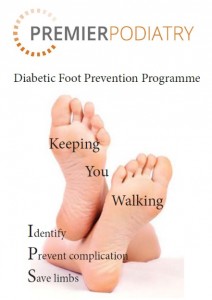- Accessory Navicular
- Achilles Tendonopathy
- Arthritis
- Arthritis of the big toe
- Bunions
- Bursa
- Bursitis
- Calf Strain
- Capsule Rupture
- Capsulitis/Synovitis
- Cartilage Damage
- Cavoid Foot
- Compartment Syndrome
- Cuboid Dysfunction
- Cyst
- Exercise Induced Leg Pain
- Flat Foot
- Ganglions
- Hallux Valgus
- Hammer Toe
- Hammer/Mallet/Retracted Toe
- Hamstring Strain
- Iliotibial band (ITB) syndrome
- Ingrown Toenails
- Insertional Achilles Tendonopathy
- Interdigital Corns
- Lateral Ankle Sprain
- Lisfrancs
- Lower Back Pain
- Mallet Toe
- Medial Ankle Sprain
- Medial Tibial Stress Syndrome
- Melanoma
- Metatarsalgia
- Nerve Entrapment
- Neuroma
- Osgood Schlatter
- Patella tendonopathy
- Patellofemoral Pain Syndrome
- Peroneal Overuse
- Peroneal Tendon
- Peroneal Tendon Injury/Overuse
- Piriformis Syndrome
- Plantar Fasciitis
- Plantar Fibroma
- Posterior Heel Spur
- Pump Bump
- Quadricpes Strain
- Retracted Toe
- Sacoriliac Joint Pain
- Sesamoiditis
- Severs
- Sinus Tarsi
- Stress Fracture
- Tailor’s Bunion
- Tarsal Tunnel Syndrome
- Tenosynovitis
- Tibialis Posterior Tendon
- Trochanteric Bursitis
- Verruca
Do you have diabetes?
Are you looking after your feet?
If Diabetes were a country, it would be the 4th largest country in the world (1), such is the number of people with diabetes, and the number is growing. It is estimated that there are now 387 million people in the world living with diabetes, but as staggering as that number is, by 2030 at least 550 million people are predicted to have diabetes – approximately 10% of the world’s adult population(2).
Unfortunately, the complications of diabetes can result in ulceration of the foot (see below) and it is estimated that the cost of managing diabetic foot ulceration is more than that of the top 5 cancers(3).
- .
How does diabetes affect the feet?
Many people with diabetes will lose the sensation in their feet4 (this is called peripheral neuropathy) and more than 90% of those will be unaware that this is the case(5).
20-30% of people with diabetes will have reduced blood supply to the feet (peripheral artery disease)(6).
These complications result in altered muscle function, skin tone and foot deformity. As a result, there will be increased pressure beneath the ball of the foot or on prominent joints, placing the foot at risk. Whereas a healthy person would feel this increased load or pressure, someone with neuropathy cannot. This means they are unaware of the ‘warning signs’ (pain) and carry on, often not noticing there is a problem until they remove their shoes and socks and notice bleeding. This loss of feeling can also result in foreign body injuries that go unnoticed. Indeed, we have removed staples, pieces of Pyrex and even cashew nut shells from people’s feet who were totally unaware.
As a result, up to 25% of people with diabetes will develop an ulcer (7), half of which will become infected, requiring hospitalisation and, unfortunately 20% of infections result in amputation of the leg (8).
Every 30 seconds on this planet someone with diabetes loses a leg (9).
Is there anything that can be done to prevent these problems?
Prevention is always better than cure and the best prevention is controlling the diabetes well. Diabetes means that there is too much glucose (sugar) in the blood and these high levels affect the whole body. The stricter someone controls their diabetes (i.e. their blood sugar levels) with exercise, a good diet and regular medication where required, the less likely they are to develop the complications.
Unfortunately, these complications develop over many years ”silently”; people are unaware they are developing, until it is too late. Furthermore, once they occur, they are irreversible. Therefore it is important that people with diabetes are strict with their glucose control ALL OF THE TIME.
Fortunately, once the loss of sensation has occurred, much can be done to prevent ulceration, infection and amputation. Good Podiatry care reduces the rate of ulceration and hospitalisation and reduces the risk of amputation (10). Even when an ulcer has occurred, a specialist diabetes foot service reduces amputation rates by 75% (11).
Prevention requires a combination of:
Identification of the type and extent of the diabetes foot complications
Appropriate management of the complications
Patient education and self help.
How can you help prevent the complications?
All patients with diabetes should have an annual foot assessment – recall that many have a problem but don’t feel anything wrong. This can be with the GP, a hospital clinic or in the private sector. Please see here for a 3 minute diabetic foot examination. At Premier Podiatry, we have over 30 years of experience in managing the severe complications of diabetic foot problems. We use a range of assessments and treatments shown to be effective in research studies to minimise the risk and provide a comprehensive plan.
Our Diabetic Foot Prevention Programme includes:
o A detailed history
o Vascular assessment
- Use of specialist Doppler equipment allows us to determine the quality of blood flow to the legs
o Neurological assessment
- Standardised neurological assessment helps to determine the level of sensation present.
o Musculoskeletal assessment
- Identification of underlying deformity and skin tone allow areas of risk to be identified.
o Footwear assessment
- Shoes are a key to preventing problems once there is reduced sensation or blood supply and we will advise accordingly.
o Risk classification
- This information is used to provide an internationally recognised risk classification which guides the level and frequency of assessment and treatment.
o Patient education
- The patient themselves are key to the prevention process. By educating patients on prevention measures, many of the risks of diabetes to feet can be avoided.
- Self monitoring. There is evidence that monitoring skin temperature may reduce the risk of ulceration. In one study, patients who ulcerated had a temperature difference which was 4.8 times greater at the site of ulceration in the week before compared to patients who did not ulcerate (12). If you are identified as high risk, we can provide you with appropriate equipment and advice to allow home monitoring.
What treatment options are there?
o Specialist insoles:
- We are the first clinic in the UK to offer specialist insoles (based on measured pressure under the foot as well as shape of the foot) that have been shown in scientific studies to reduce the pressure underneath the foot and reduce the re-ulceration rate by 3.4 times (13,14) compared with insoles that do not include pressure measurement.
- Once a risk has been determined, we:
- Advise on the most appropriate shoes
- Take a reading of the pressures underneath the foot using a special foot pressure platform
- We take a 3 dimensional scan or impression of the foot
- The pressure and shape insole is then produced
- The effectiveness is then checked by using a force sensing insole within the shoe
o Ulcer management
- If there is an active ulcer, we will provide a comprehensive screening and management service. This will include:
- Liaison with your GP / hospital team where required
- Debridement and management of the ulcer
- Investigations such as x-rays, MRI scans and blood test to screen for deeper infection where necessary
- Arrange for antibiotics to manage infection
- Refer for specialist services
o Surgery
- Where appropriate, we can provide surgical management of deformity or infection or arrange referral to an appropriate specialist Diabetes can have devastating consequences on the foot but, after a thorough assessment relatively simple interventions can significantly reduce the risk.
Downloads:
Related links:
http://diabeticfootonline.blogspot.co.uk/p/about-us.html
http://www.idf.org/diabetesatlas
http://surgery.arizona.edu/education
http://diabeticfootandankle.net/index.php/dfa/index
References
1. http://www.idf.org/diabetesatlas
2. International Diabetes Federation (IWGDF), 2011
3. Barshes et al Diabetic foot & ankle, 2013, complete article here http://diabeticfootandankle.net/index.php/dfa/article/view/21847/html
4. Abbott CA, Carrington AL, Ashe H, et al. The North-West Diabetes Foot Care Study: incidence of, and risk factors for, new diabetic foot ulceration in a community-based patient cohort. Diabetic Medicine.2002;19:377–384.
5. Bongaerts BW et al, Older subjects with diabetes and prediabetes are frequently unaware of having distal sensorimotor polyneuropathy, The KORA F4 study, Diab Care, 2013:36 : 1141-46
6. Marso P, Hiatt WR, Peripheral arterial disease in people with diabetes, J Am Coll Cardiol, 2006: 47(5): 921-929 doi:10.1016/j.jacc.2005.09.065
7. Singh N, Armstrong DG, Lipsky BA. Preventing Foot Ulcers in Patients with Diabetes. Journal of the American Medical Association. 2005;293(2):217–28
8. Lavery LA, Armstrong DG, Wunderlich RP, Mohler MJ, Wendel CS, Lipsky BA. Risk factors for foot infections in individuals with diabetes. Diabetes Care. 2006;29:1288–93
9. Boulton, Editorial, The Lancet, 2005: 366
10. Gibson, T. B., Driver, V. R., Wrobel, J. S., Christina, J. R., Bagalman, E., DeFrancis, R., Garoufalis, M. G., Carls, G. S. and Gatwood, J. (2014), Podiatrist care and outcomes for patients with diabetes and foot ulcer. International Wound Journal, 11: 641–648. doi: 10.1111/iwj.12021
11. Weck et al., Structured healthcare for subjects with diabetic foot ulcers in a reduction of major amputation rates, Cardiovascular Diabetology 2013,12:45 http://www.cardiab.com/content/12/1/45
12. Armstrong DG, Holtz-Neiderer K, Wendel C, Mohler MJ, Kimbriel HR, Lavery LA., skin temperature monitoring reduces the risk for diabetic foot ulceration in high-risk patientsAm J Med. 2007 Dec;120(12):1042-6. Erratum in: Am J Med. 2008 Dec;121(12). doi: 10.1016/j.amjmed.2008.09.029.
13. Owings TM, Woerner JL, Frampton JD, Cavanagh PR, and Botek G. Custom therapeutic insoles based on both foot shape and plantar pressure measurement provide enhanced pressure relief. Diabetes Care. 31(5):839-44. 2008
14. Ulbrecht JS, Hurley T, Mauger DT, Cavanagh PR, Prevention of recurrent ulcers with plantar pressure-based in-shoe orthoses: the CareFUL prevention multicentre randomized controlled trial, Diab Care 2014: 37(7): 1982-9 10.2337/dc13-2956

 Call 020 8502 1777 or
Call 020 8502 1777 or  online form
online form